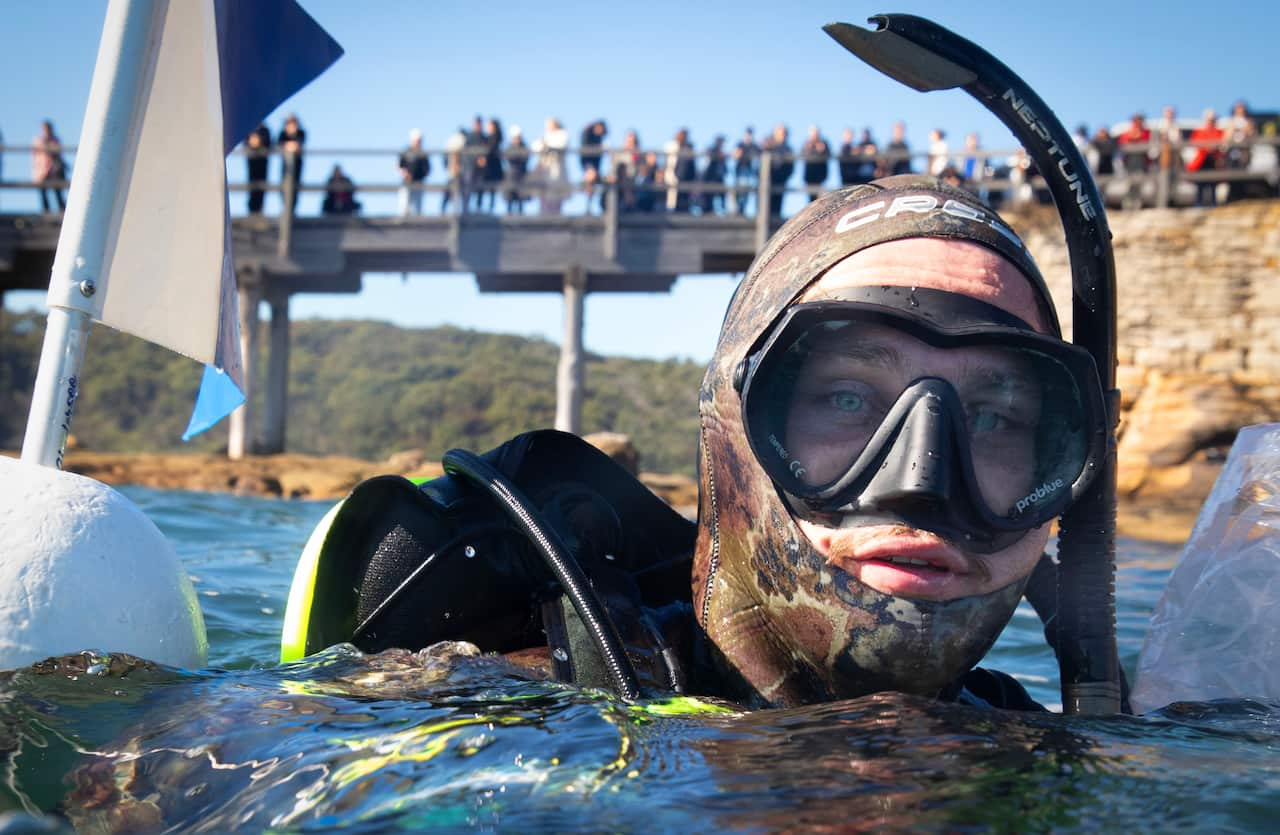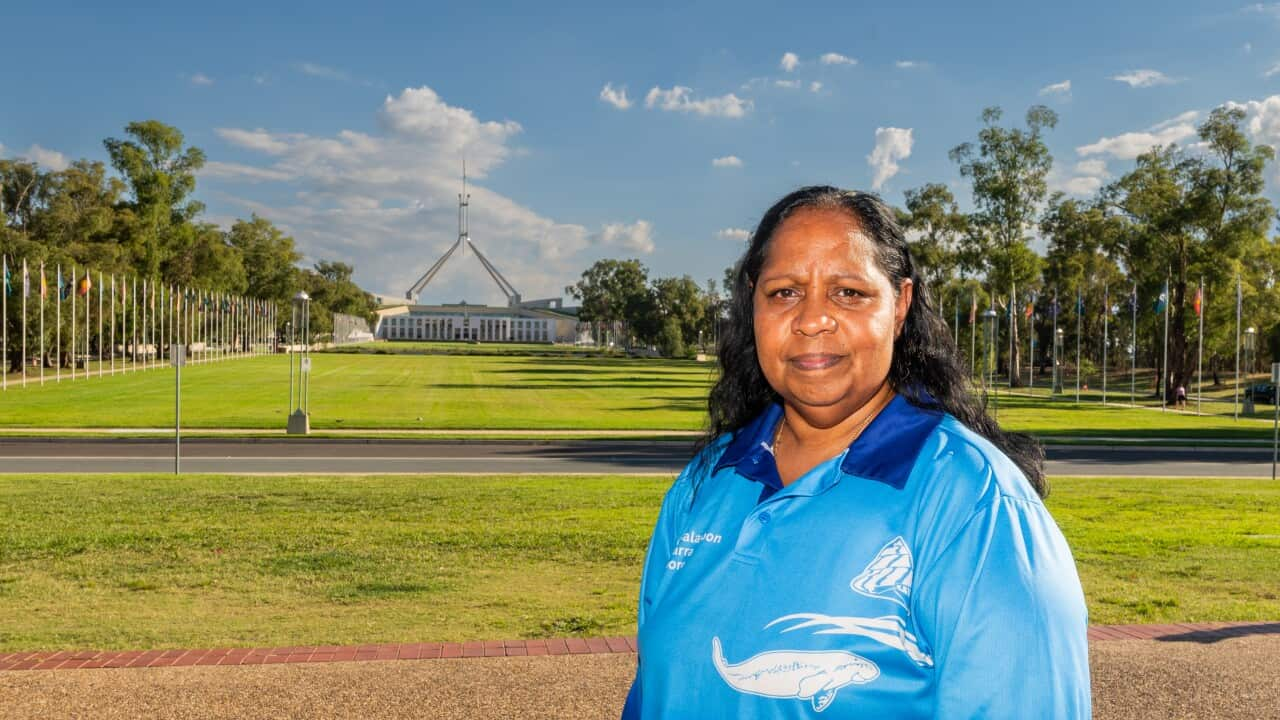For the saltwater people of Gamay (Botany Bay), their Sea Country - and the health of it - holds a special place.
On Wednesday the La Perouse Local Aboriginal Land Council launched its inaugural Gamay Sea Country Plan, a community-led vision for how to work together to care for the local Country.
Land council chief executive Chris Ingrey said the Gamay Sea Country Plan is both aspirational and practical, aiming to guide community led research, education, and partnerships and includes a vision for more effective input in the day-to-day management of the bay.
“We had spent some considerable time in developing this plan, ensuring our people’s values within Gamay are represented and our people’s interest in their Sea Country is front and centre," he said.

Gamay Rangers with La Perouse LALC deputy CEO Carrine Liddell and NSW Minister for Environment Penny Sharp. Credit: Renee Nowytarger, Country Needs People
“As saltwater people, Sea Country is very significant for us," the Dharawal man said.
The Gamay Rangers' work includes taking care of special places, primarily in the Gamay/Botany Bay, Sydney Harbour, Port Hacking region, like middens; protecting marine mammals and working on under threat ocean habitats that support significant cultural food sources.
"Over time, we've noticed that specific seafood, in particular shellfish like crabs and lobster and abalone have become really hard to source over the past three decades," Mr Cooley said.
"So working with our partners has given us a better understanding why those things are becoming a lot more scarce, and then coming up with plans, with our partners to improve those ocean ecosystems and hopefully entice those species back into those areas and build up populations again."
While it borders some of Sydney’s most built up and industrial zones, Gamay Sea Country is still rich in cultural and natural resources.
There are seagrass meadows, intertidal beaches, sandflats, mangroves, saltmarsh, rocky intertidal shores, open water and pelagic systems, subtidal rocky reef and wetlands (including internationally protected Towra Point Nature Reserve), which all provide crucial habitat for a number of threatened and culturally significant species.
During the consultation period for the plan, the community shared stories about many important locations and marine species that have been part of the cultural and social fabric of the Gamay community for tens of thousands of years.
These include the culturally significant Burri Burri (Humpback Whale) as well as the Australian fur seal, dugong, octopus, mullet, abalone and Weedy sea dragon and many bird and plant species.
READ MORE

Environment: Ningaloo Reef Rangers
One of the strengths of the new Sea Country plan, Mr Cooley says, is that enables the nuances in priorities for community to be explained to other organisations.
"Humpback whales are a real conservation success story whereas southern right whales are not," Mr Cooley said.
"So the humpback whale, our spirit ancestor or totem, may not promote a big response from National Parks, if there's one in our cultural area, or as big a response as something like a southern right whale.
"But for us, even though their numbers are in much healthier populations now, it's still a bigger significant event for us if a humpback whale decides to visit our cultural area, which is a little bit different to our National Parks and Wildlife management, but through that understanding, that working relationship, they now understand our point of view."
The Gamay Rangers have worked with the NSW Government and National Parks and Wildlife and are now part of the large whale disentanglement teams.
"So basically, if one of those marine mammals, which are very important to us, gets itself into a little bit of trouble, either via shark nets or long fishing line or something else, our teams are now formally accredited team members - and that gives us a hands on role in the coalface of those operations to protect that animal, if such a thing were to happen in our Sea Country," Mr Cooley said.
"So that's the first for any Indigenous Ranger program in the country, a real milestone in our capabilities and our capacity to participate in protecting marine mammals."

Gamay Rangers manager Robert Cooley gathers his community for a mullet haul out at Bombora Point. Credit: Jessica Hromas, Country Needs People
The rangers have been working in partnership with scientists from Sydney Uni, UNSW and the Sydney Marine Institute on a project on sea urchins.
"We're trying to get a better understanding of why these urchins are creating these underwater barrens and, basically, by doing that those culturally significant food sources that may have traditionally lived in those areas, are no longer there," Mr Cooley said.
"And coming up with plans to influence management systems to try and improve those areas so our community can again maintain connection to those special areas.
"Operation Cray Weed that's about restoring some of the cray weed which is refuge for things like lobster and abalone."

Seahorses bred in captivity are released back into the wild with the help of Gamay Rangers. Ranger Bryce Liddle went into the water scuba diving down to release the seahorses into their 'Seahorse hotel'. Credit: Jessica Hromas, Country Needs People.
“Sea Country plans like this help Traditional Owners and Indigenous Rangers collaborate with the broader community to protect Sea Country for generations of Australians to come," Country Needs People chief executive Patrick O’Leary said.
"It’s a generous and collaborative vision expressed in the plan.
"We urge all interested people and organisations to get behind the Land Council, Rangers and community to ensure we’re working together in the best interests of Sea Country.”






